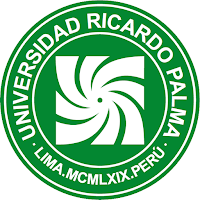Social Realist Commitment in El tungsteno by César Vallejo. Innovation of the Mechanisms of Realistic Narrative Discourse
Social Realist Commitment in El tungsteno by César Vallejo. Innovation of the Mechanisms of Realistic Narrative Discourse Social Realist Commitment in El tungsteno by César Vallejo. Innovation of the Mechanisms of Realistic Narrative Discourse
Article Sidebar
Main Article Content
Saadeya Mousa Abd El Azeem
Abstract
This works examines the social realist commitment characterized in the narrative of Latin American author and Peruvian poet César Vallejo (1892). This commitment to a social realist cause is particularly seen in his novel El tungsteno (1931), a brilliant work that became one of the most outstanding novels of the first half of the twentieth-century Latin American literature. This paper first sheds light on the life and literary trajectory of Peruvian poet César Vallejo, one of the most brilliant lyricists of the twentieth century Latin America. Secondly, this work will examine the innovative narrative discourses embedded in El tungsteno. To do that, I will do an analytical study of social commitment in Vallejo’s narrative; then, I will examine the narrative discourses mechanisms used, partaking with an analytical study of the main characters and then exploring the realistic narrative context of El tungsteno, as it will be discussed in depth in this paper.
Article level metrics
Downloads
Metrics
Article Details

This work is licensed under a Creative Commons Attribution 4.0 International License.
La revista utiliza una licencia Creative Commons para mostrar a los lectores y a los usuarios cómo se pueden utilizar los contenidos publicados.
Los contenidos publicados en la revista están bajo una licencia CC-BY 4.0, la cual permite:
- Compartir, copiar y redistribuir el material en cualquier medio o formato.
- Adaptar, remezclar, transformar y construir a partir del material para cualquier propósito, incluso comercialmente.
Bajo los siguientes términos:
- Atribución. Usted debe dar crédito de manera adecuada, brindar un enlace a la licencia, e indicar si se han realizado cambios. Puede hacerlo en cualquier forma razonable, pero no de forma tal que sugiera que usted o su uso tienen el apoyo de la licenciante.
La información de licencia se muestra e incrusta en las páginas de artículos y en ficheros de texto completo como sigue:
«Este obra está bajo una licencia de Creative Commons Reconocimiento 4.0 Internacional».
Barthes, Roland (1964). «Eléments de Sémiologie». Communications, 94, Paris: Editions du Seuil, 11, citado en Ballón Aguirre, Enrique (1974). Vallejo como paradigma. Lima: Instituto Nacional de Cultura, 12.
Castagnino, Raúl (1988). «Dos narraciones de César Vallejo». En Merino, Antonio (ed.). En torno a César Vallejo. Madrid: Ediciones Júcar.
Hinostroza, Rodolfo (1967). «Reflexiones sobre el asunto poético». Los nuevos. Lima: Editorial Universitaria.
Lukács, Georg (1966). Sociología de la literatura. Madrid: Península.
Oviedo, Rocío (2009). «Refutación de la paradoja, la dialéctica poética y social de César Vallejo». América sin Nombre, 13-14, 113-122.
Reyes Tarazona, Roberto (2011). «Prólogo». En Vallejo, César. El tungsteno. Lima: Fondo Editorial de la Universidad de Ciencias y Humanidades, 9-35.
Valdivia Paz-soldán, Rosario (2010). «Creatividad y comunión en César Vallejo, autor y traductor». Mutatis Mutandis, 3, 2, 279.
Vallejo, César (1973). El arte y la revolución. Obras completas. Tomo segundo. Lima: Mosca Azul Editores.
______ (1978). El arte y la revolución. Volumen 4. Obras completas de César Vallejo. Barcelona: Laia.
______ (2011). El tungsteno. Prólogo de Roberto Reyes Tarazona. Lima: Fondo Editorial de la Universidad de Ciencias y Humanidades.
Similar Articles
- Williams Nicks Ventura Vásquez, The reception of César Vallejo’s Colacho hermanos (1934) by literary criticism , Archivo Vallejo: Vol. 6 No. 11 (2023): January - June
- Miguel Pachas Almeyda, César Vallejo: The socio-political commitment of a revolutionary intellectual , Archivo Vallejo: Vol. 5 No. 10 (2022): July - December
You may also start an advanced similarity search for this article.










